Bold Opinions on Movie Trailers Every Cinephile Needs
Category: Film & Cinema
Dive Into Bold Opinions on Movie Trailers: What They Really Say
You’re a passionate movie lover who thrives on unfiltered takes and fearless insights. You’ve scrolled through countless trailers, felt teased by tantalizing shots, or even been left disappointed by trailers that didn’t deliver. You want more than the usual praise or generic excitement; you crave blunt, candid, and genre-spanning opinions that cut through the hype and reveal what a trailer really promises—or hides. You’ve landed here because you’re fed up with bland, safe reviews and want a fresh perspective that dares to question popular perceptions.
This post is tailored for enthusiasts like you who understand storytelling but seek a sharper lens on the first slices of any film experience: the trailers. We’ll break down why some trailers succeed brilliantly while others mislead or undermine their movies. From pulse-pounding action flicks to heartfelt romances, our bold opinions will challenge what you thought you knew about movie previews.
Unlike typical reviews focused on whether the final film is good or bad, we dive into the art and strategy of trailers—their promises, pitfalls, and power plays. You’ll learn which trailers are worth your time and why, helping you make smarter choices about what to watch. Ready to see movie trailers in a vastly new light? Keep reading for fresh, fearless analysis that cuts through the clutter.
- Dive Into Bold Opinions on Movie Trailers: What They Really Say
- The Purpose of Movie Trailers: Beyond Just Hype
- When Trailers Oversell and Undersell: Bold Takes on Misleading Marketing Tactics
- The Art of the Perfect Trailer: Narrative Teasers Without Spoilers
- Genre-specific Trailer Strategies: What Works for Action vs. Romance vs. Thriller
- Breaking Down Clichés: Trailers That Rely Too Much on Formulaic Shots and Tropes
- Iconic Trailers That Changed the Game: Bold Opinions on All-Time Classics
- Trailer Editing vs. The Actual Movie: When Expectations Clash with Reality
- Audience Reactions & Viral Trailer Moments: How Bold Opinions Shape Viewing Decisions
- The Future of Movie Trailers: Bold Predictions and Trends to Watch
- How to Read Between the Lines: Tips for Developing Your Own Bold Opinions on Trailers
The Purpose of Movie Trailers: Beyond Just Hype
Movie trailers serve a critical role that goes far beyond generating simple excitement—they are sophisticated tools designed to attract, inform, and sometimes manipulate audience expectations. At their core, trailers must balance three essential functions:
-
Attracting Attention: They hook viewers quickly with striking visuals, memorable music, or intriguing snippets of dialogue to cut through the noise of countless entertainment options. In today’s crowded media landscape, grabbing an audience’s interest within the first few seconds is a strategic necessity, not just creative flair.
-
Informing the Audience: Trailers provide a snapshot of the film’s genre, tone, and story premise. This helps viewers decide if a movie aligns with their tastes—whether it’s an adrenaline-fueled action thriller, a poignant romance, or a dark psychological thriller. Smart trailers deliver just enough context to spark curiosity without spoiling key plot points or character arcs.
-
Manipulating Expectations: Perhaps the most controversial aspect, trailers can deliberately shape or even distort how audiences perceive a film. Sometimes they overpromise with sensational scenes or misleading edits, setting up expectations that the finished product fails to meet. This tactic can boost initial interest but often leads to disappointment if the trailer’s vision isn’t aligned with the actual movie.
Understanding these layers is essential for any bold movie lover seeking to cut through the marketing jargon. Trailers are crafted with clear objectives and commercial interests in mind—they aren’t always honest previews but calculated invitations. By recognizing their dual role as both marketing vehicles and storytelling teasers, you’ll be better equipped to decode what a trailer truly says about the film it represents—and whether it’s worth your ticket.
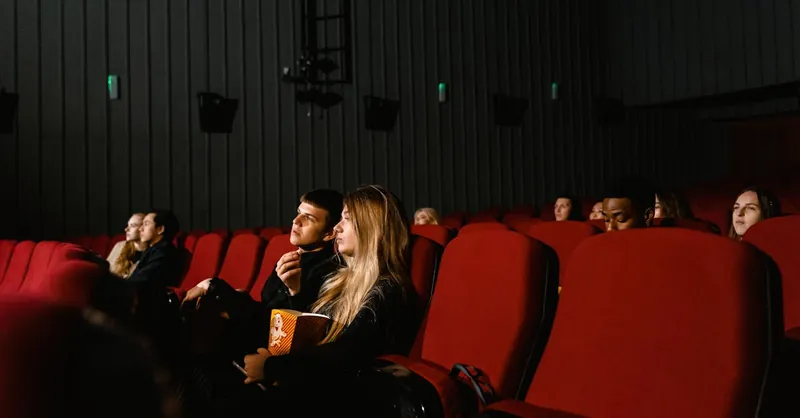
Image courtesy of Tima Miroshnichenko
When Trailers Oversell and Undersell: Bold Takes on Misleading Marketing Tactics
One of the most frustrating experiences for any movie buff is encountering a trailer that either oversells or undersells the film it represents. When trailers exaggerate key elements—flashing high-octane action scenes or emphasizing star-studded cameos that barely appear—they can artificially inflate audience expectations. This overselling often results in a jarring disconnect between the thrilling preview and the actual movie, leaving viewers feeling duped and disappointed. Classic examples include trailers that showcase intense fight sequences or explosive moments that turn out to be fleeting or entirely absent from the final cut. Such misleading marketing not only erodes trust but also fuels negative word-of-mouth, ultimately harming the film’s reputation.
On the flip side, many trailers undersell a movie’s true qualities, presenting it as generic or dull when, in reality, it offers unique storytelling, emotional depth, or genre-defying twists. This cautious marketing approach stems from studios playing it safe, hesitant to reveal the film’s most distinctive or nuanced aspects for fear of alienating mainstream audiences. However, underselling can backfire by failing to generate sufficient interest or buzz, leaving remarkable films undiscovered in the oversaturated market. Bold movie lovers benefit when trailers strike a genuine balance—providing an honest glimpse of tone and content without resorting to gimmicks or half-truths. Recognizing these patterns empowers viewers to sift through hype and hype-avoidance tactics alike, enabling smarter viewing choices and a more satisfying cinematic experience.
Notable Examples of Misleading Trailers
- Overselling the Action: Trailers that highlight flash-heavy sequences but mask slow pacing or convoluted plots.
- Underselling Emotional Core: Previews that neglect heartfelt or character-driven moments in favor of generic spectacle.
- Misleading Genre Signals: Marketing a film as a mystery or thriller when it’s primarily a comedy or romance.
By sharpening your awareness of these tactics, you gain the upper hand—transforming movie trailers from mere promotional fluff into insightful indicators of what truly awaits on screen.
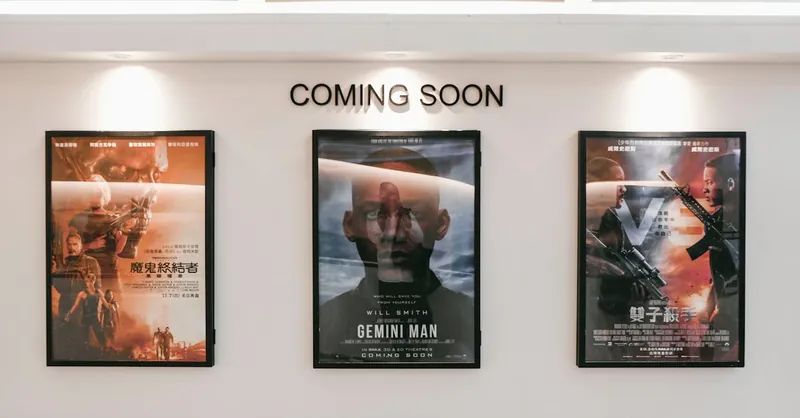
Image courtesy of 𝗛&𝗖𝗢
The Art of the Perfect Trailer: Narrative Teasers Without Spoilers
Crafting a perfect movie trailer is an intricate art form—a delicate balance between igniting intrigue and preserving the story’s surprises. The best trailers function as narrative teasers, offering viewers just enough to spark curiosity without revealing key plot twists or resolutions. This tightrope walk between engagement and restraint requires a strategic approach to editing, pacing, and content selection that respects both the audience’s desire for discovery and the filmmakers’ need to protect the story’s integrity.
Key Elements of Trailers That Get the Balance Right
-
Selective Storytelling: They tease central themes and character motivations without divulging major conflicts or endings. By focusing on evocative moments—expressions, fleeting dialogue lines, or atmospheric shots—these trailers invite viewers into the film’s world without giving away its secrets.
-
Tone-Setting Ahead of Plot Details: Instead of outlining the entire narrative arc, effective trailers prioritize establishing the movie’s mood and emotional texture. Whether it’s the ominous tension of a thriller or the whimsical charm of a rom-com, the vibe sets expectations more powerfully than plot summaries.
-
Raising Questions, Not Answers: Masterful trailers end with unresolved tension or provocative questions that stay with the viewer. This approach transforms the trailer into a puzzle piece rather than a spoiler, motivating audiences to watch the movie to find closure.
-
Avoiding the “Everything But” Syndrome: Some trailers attempt to cram every exciting scene into a short clip, sacrificing mystery for spectacle. In contrast, balanced trailers resist the urge to showcase all “best bits,” instead leaving room for surprise and emotional payoff.
By mastering this approach, trailers become effective marketing tools that respect viewers’ intelligence and preserve narrative impact, enhancing overall movie enjoyment. For movie enthusiasts who seek honest previews without cringeworthy spoilers, identifying these qualities is key to separating quality trailers from overexposed commercial fluff. Next time you watch a trailer, pay close attention to how the story is teased—does it leave you curious or exhausted? This insight will drastically improve your trailer-watching experience and guide smarter viewing decisions.
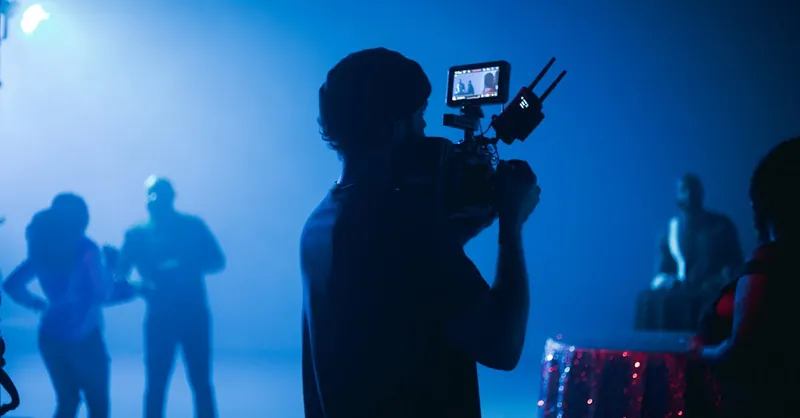
Image courtesy of Kyle Loftus
Genre-specific Trailer Strategies: What Works for Action vs. Romance vs. Thriller
Movie trailers are far from one-size-fits-all; their storytelling techniques and visual styles are meticulously tailored to resonate with genre conventions and audience expectations. Understanding these genre-specific trailer strategies reveals why some previews immediately grab your attention while others fall flat—and how studios leverage these tactics to maximize appeal.
Action Trailers: High-Octane Visuals and Momentum
Action movie trailers rely heavily on fast-paced editing, explosive set pieces, and adrenaline-charged music to hook viewers. They prioritize:
- Showcasing physical spectacle: Intense action sequences, stunts, and fight choreography dominate, designed to thrill and promise relentless excitement.
- Building momentum: Rapid cuts and escalating stakes create a sense of urgency and kinetic energy that mirrors the film’s pacing.
- Hero-centric framing: Emphasizing charismatic leads or familiar action stars reassures fans of the genre’s classic appeal.
- Minimal exposition: Backstory and plot details take a backseat to visual intensity; the trailer aims to evoke visceral excitement over complex storytelling.
However, a bold opinion: When action trailers lean too heavily on spectacle without hinting at a compelling narrative or stakes, they risk feeling shallow or repetitive, ultimately diminishing audience interest beyond the initial wow factor.
Romance Trailers: Emotional Connection and Character Focus
In contrast, romance trailers adopt a subtler, more intimate approach, honing in on:
- Character chemistry: Close-ups, tender glances, and meaningful dialogues build anticipation for the emotional journey.
- Tone-setting with music: Soft, evocative soundtracks underscore the film’s mood, be it lighthearted, bittersweet, or passionate.
- Narrative hints: While still avoiding major spoilers, romance trailers more frequently reveal relationship dynamics, personal conflicts, or transformative moments.
- Emphasizing relatability: Trailers often highlight themes like love, loss, and personal growth to forge an empathetic connection.
The bold takeaway here: Romance trailers that sugarcoat or sanitize conflicts risk feeling insipid. Authentic emotional tension—flaws, misunderstandings, vulnerability—is what truly draws viewers in and makes the promise of the film feel genuine.
Thriller Trailers: Atmosphere, Mystery, and Psychological Hooks
For thrillers, trailers aim to envelop the audience in suspense with strategies including:
- Ambiguous storytelling: Withholding information while dropping intriguing clues to ignite curiosity and speculation.
- Dark, moody visuals: Lighting, shadows, and unsettling imagery craft a palpable atmosphere of tension or dread.
- Pacing that teases: Slow builds punctuated by sudden shocks or twists keep viewers on edge.
- Narration or cryptic lines: Voiceovers or enigmatic dialogue provoke questions without revealing the plot’s core.
A critical perspective: While withholding too much can frustrate audiences, overly revealing trailers spoil the suspense, undermining the thriller’s core appeal. The best trailers maintain a delicate balance that tantalizes without unraveling.
By recognizing these genre-tailored approaches, bold movie fans gain a sharper ability to decode what trailers genuinely convey—and when they’re being sold a generic, mismatched experience. This genre-specific insight is key to making discerning choices that align trailers’ promises with true cinematic payoff.
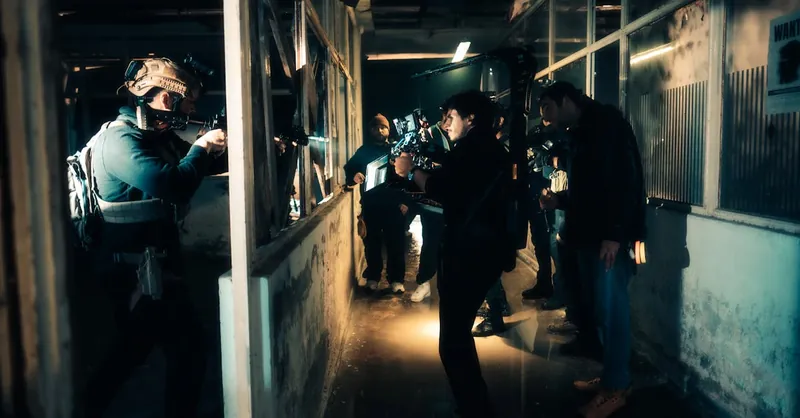
Image courtesy of Wolrider YURTSEVEN
Breaking Down Clichés: Trailers That Rely Too Much on Formulaic Shots and Tropes
One of the most tiring trends in movie trailers is the excessive dependence on formulaic shots and overused tropes that drain excitement and cause viewer fatigue. When trailers lean too heavily on the same set of predictable visual cues—like slow-motion explosions, intense close-ups of anguished faces, or cliché voiceover lines—they risk blending into the endless background noise of cinematic previews. This repetitive recycling not only undermines originality but also signals a lack of confidence in the film’s unique qualities. Instead of sparking genuine curiosity, these trailers often come across as cookie-cutter advertisements, resulting in audience disengagement and diminished anticipation.
Common Trailer Clichés That Dilute Impact
- The ‘Soundtrack Drop’ Blowout: The dramatic crescendo in music timed perfectly with a flashy scene or title card—a trope so overused it’s become predictable and often artificial.
- The ‘Silent Close-Up’: A slow zoom on a character’s face while intense music plays, implying a deep internal conflict that may or may not be elaborated in the film.
- Explosions and Quick Cuts Over Substance: Firing rapid-fire edits of explosion aftermaths, car chases, or fight scenes without contextual storytelling, giving style without meaningful content.
- Overemphasized Taglines and Dialogues: Placing generic catchphrases like “This summer, nothing is as it seems” front and center, which rarely add real intrigue.
- Misleading Emotional Beats: Trailers that force emotional reactions with scenes taken out of context—such as a tearful glance or a sudden hug—that don’t represent the film’s true tone.
These predictable elements not only fuel viewer desensitization but also create skepticism about a movie’s actual quality. Instead of enticing the audience into a fresh experience, they signal a reliance on marketing formulas designed to mimic past successes rather than showcase innovation.
Why Being Formulaic Backfires for Movie Trailers
- Viewer Fatigue: Audiences exposed to the same clichés become numb and less likely to engage emotionally or intellectually.
- False Expectations: Using recycled tropes can misrepresent the film’s narrative or tone, resulting in mismatched expectations and disappointment.
- Lost Differentiation: Movies get lost in the shuffle when trailers echo the visuals and beats of dozens of other films, making it harder to build a distinct identity.
For bold movie lovers committed to cutting through trailer noise, recognizing these clichés is a crucial skill. By spotting formulaic trailer patterns, you can better gauge when a preview is a fresh invitation or just another generic sales pitch. This vigilance helps save precious viewing time and ensures your anticipation is truly earned.

Image courtesy of Alexander Krivitskiy
Iconic Trailers That Changed the Game: Bold Opinions on All-Time Classics
Certain movie trailers do more than just sell a film—they revolutionize the art of previewing movies, setting new industry standards for creativity, marketing impact, and audience engagement. These iconic trailers disrupt conventional norms and become cultural touchstones, often remembered as much as the films themselves. But which trailers truly broke the mold, and what can today’s bold movie lovers learn from them?
Defining Features of Game-Changing Trailers
-
Innovative Storytelling Techniques: These trailers innovate beyond the typical montage of scenes by using unique narrative structures, such as framing the preview as a mini-story or employing unexpected voiceover styles that add layers of meaning.
-
Visual and Auditory Mastery: They blend groundbreaking cinematography or editing with evocative sound design that not only teases the film but creates a standalone artistic experience.
-
Subversion of Expectations: Rather than relying on clichés or spoilers, these trailers challenge viewers’ assumptions by hinting at genre-bending elements or thematic depth, inviting sophisticated interpretation.
-
Cultural Impact and Viral Spread: The best trailers tap into zeitgeists and provoke discussions that extend far beyond their initial release, frequently influencing marketing trends and audience anticipation practices.
Legendary Examples That Changed Trailer-Making
-
The Silence of the Lambs (1991): Stripping away conventional flashy action for minimalist imagery and haunting audio cues, this trailer created suspense through implication rather than overt revelation, redefining psychological thriller promos.
-
The Dark Knight (2008): Utilized nonlinear editing and cryptic dialogue to build enigmatic tension, letting audiences piece together narrative hints and enhancing the mystery around Heath Ledger’s Joker, which fueled massive pre-release hype without giving spoilers.
-
Inception (2010): Balanced mind-bending visuals with dramatic score and cryptic snippets of dialogue, showcasing the film’s complex premise while preserving key plot twists, a masterclass in teasing intellectual narrative complexity.
These trailers didn't just advertise movies; they reshaped audience expectations on how films should be introduced, moving from simple showcases to immersive experiences. They set the bar high for authenticity, artistry, and emotional resonance in marketing—a bold blueprint not every modern trailer follows but every discerning movie fan admires.
By analyzing these trailblazing trailers, you gain insight into how innovation and restraint within trailer-making not only heighten excitement but respect audience intelligence. For anyone frustrated with the current flood of formulaic previews, these iconic examples offer a benchmark and inspire hope for more authentic, engaging movie trailers moving forward.
Image courtesy of Nathan J Hilton
Trailer Editing vs. The Actual Movie: When Expectations Clash with Reality
One of the most frequent frustrations for cinephiles is the stark disconnect between a movie trailer and the film it ultimately represents. Trailers are crafted to captivate, often employing sharp editing techniques and selective scene choices that showcase only the most dazzling or emotionally charged moments. However, this curated glimpse can paint an inaccurate picture of the movie’s tone, pacing, or storyline—leading to disappointment when viewers realize the full feature diverges significantly from the initial preview.
This clash arises primarily because trailers are marketing tools prioritizing impact over authenticity. Editors might rearrange scenes out of narrative order, amplify action sequences that are minor in the film, or highlight a charismatic performance even if it plays a limited role. For example, a suspenseful thriller trailer may foreground intense confrontations that actually occur only late in the movie, misleading audiences about the pacing and focus. Similarly, a romantic comedy’s trailer could minimize humor to emphasize drama or vice versa, warping viewer expectations.
Why This Frustrates True Movie Lovers
- Expectation vs. Experience Gap: When trailers set up a promise—whether it’s relentless excitement, deep emotional engagement, or clever twists—and the movie doesn’t deliver, it erodes trust in marketing and often the film itself.
- Wasted Viewing Time and Money: Movies that significantly underperform relative to their trailers lead to audience dissatisfaction, fueling negative reviews and skepticism toward future promotional materials.
- Dilution of Artistic Intent: Over-edited trailers can misrepresent a director’s vision or the film’s structural rhythm, which diminishes appreciation for the movie’s actual craftsmanship.
How to Navigate the Trailer-Movie Divide Successfully
- Scrutinize the Trailer’s Composition: Be mindful of whether scenes flow naturally or feel disjointed—excessive rapid cuts or inconsistent tones can signal manipulation.
- Seek Multiple Perspectives: Read bold, unfiltered reviews that discuss whether the trailer’s promises were met, helping avoid disappointment.
- Look Beyond the Trailer’s Style: Trust trailers that emphasize mood and theme over flashy spectacle, as they’re often more aligned with the movie’s true character.
By becoming aware of the complex relationship between trailer editing and the final film, bold viewers sharpen their critical eye, learning to separate genuine previews from hype-driven illusions. This savvy approach not only saves you from misleading expectations but enriches your overall movie-watching satisfaction—empowering you to engage with films based on informed anticipation rather than glossy marketing facades.
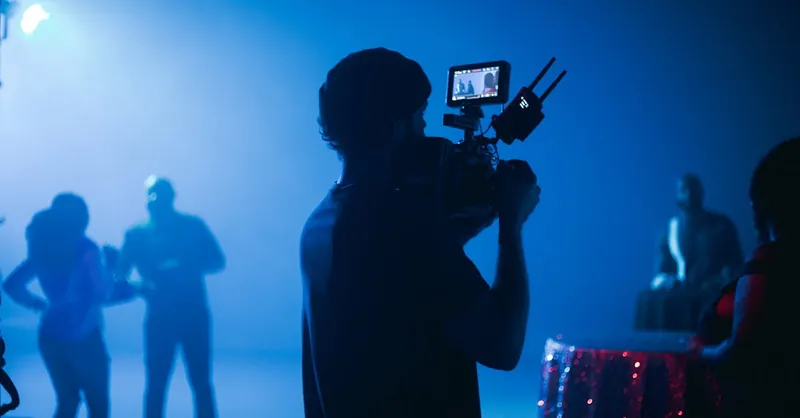
Image courtesy of Kyle Loftus
Audience Reactions & Viral Trailer Moments: How Bold Opinions Shape Viewing Decisions
In today’s digital age, movie trailers don't just introduce films—they ignite instant social and cultural conversations that ripple across platforms like Twitter, TikTok, Reddit, and YouTube. Audience reactions to trailers have become powerful forces shaping not only immediate viewing intentions but also the long-term buzz and success of a movie. Bold opinions voiced by influencers, critics, and everyday fans alike can cause trailers to go viral—or flop—dramatically impacting box office outcomes before a film even hits theaters.
These viral trailer moments often hinge on raw, unfiltered reactions that cut through polished marketing messages. Whether it’s outrage over a controversial character reveal, excitement over an unexpected cameo, or appreciation for innovative trailer editing, these collective responses act as real-time barometers of audience sentiment. This feedback loop also compels studios to sometimes tweak marketing strategies or release additional trailers addressing fan demands or critiques.
Key ways bold trailer opinions influence audience decisions include:
- Amplifying Awareness Quickly: Viral reactions can exponentially increase a trailer’s reach far beyond official channels, driving curiosity among demographics who might not have been the initial target.
- Shaping Expectations Through Social Consensus: When passionate voices highlight trailer strengths or weaknesses, they calibrate audience anticipation, encouraging some viewers to buy tickets while deterring others.
- Creating Subcultures Around Films: Memes, hashtags, and reaction videos foster communities of fans who share and dissect trailers, deepening emotional investment before seeing the movie.
- Democratizing Film Discourse: Viewer-generated critiques democratize opinions, offering counterpoints to studio PR, helping cinephiles make more informed choices.
Understanding how bold audience opinions and viral trailer phenomena intertwine empowers movie lovers to participate in these cultural moments with a sharper critical eye. It also allows you to distinguish authentic hype from orchestrated buzz, ensuring your viewing decisions align with genuine enthusiasm and insightful appraisal rather than herd mentality or marketing spin. As trailers become social events themselves, mastering this dynamic is key to navigating the modern cinematic landscape confidently and boldly.

Image courtesy of Tima Miroshnichenko
The Future of Movie Trailers: Bold Predictions and Trends to Watch
As the film industry evolves, so too does the landscape of movie trailers—transitioning from simple teaser reels to dynamic, interactive experiences that engage audiences on entirely new levels. The future of movie trailers promises a blend of cutting-edge technology and innovative storytelling techniques that will transform how viewers discover and connect with upcoming films.
Interactive and Immersive Trailers
One bold prediction is the rise of interactive trailers that allow audiences to influence or explore different story threads, characters, or outcomes right from the preview itself. Powered by platforms enabling clickable hotspots, 360-degree video, or augmented reality (AR), these trailers offer personalized teaser journeys rather than static previews. This not only heightens engagement but also builds deeper emotional investment by giving viewers a sense of agency prior to the film’s release.
AI-Driven and Data-Personalized Previews
Artificial intelligence is already reshaping content creation, and movie trailers are next. AI-driven trailers will tailor previews to individual tastes using data on past viewing habits, social media behavior, and genre preferences. Imagine trailers that dynamically adapt the tone, scenes, or even soundtrack depending on the viewer’s profile—delivering hyper-relevant marketing that feels less like advertising and more like bespoke storytelling invitations.
Short-Form Trailer Formats for Social Media
With the explosive growth of platforms like TikTok and Instagram Reels, trailers are getting ultra-condensed into bite-sized clips designed for rapid consumption and shareability. This trend puts a premium on punchy, visually striking moments that create instant hooks, often supported by trending sounds or hashtags. Studios that master this micro-trailer format will dominate early buzz cycles, reaching younger, fast-scrolling audiences with lightning speed.
Ethical Transparency and Avoidance of Misleading Edits
Amid growing skepticism toward manipulative marketing, future trailers will increasingly embrace ethical storytelling practices—balancing hype with honesty to rebuild audience trust. Transparent previews that accurately represent films’ tone and content, without overpromising or hiding key elements, are likely to resonate strongly with discerning movie lovers tired of feeling duped by misleading edits.
Together, these emerging trends signal a revolutionary shift in trailer production and distribution, aimed at delivering richer, more authentic, and audience-tailored cinematic previews. For bold movie fans hungry for fresh, unfiltered experiences from the very first glimpse, staying ahead of these innovations is essential to maintaining an empowered and discerning movie-watching perspective.
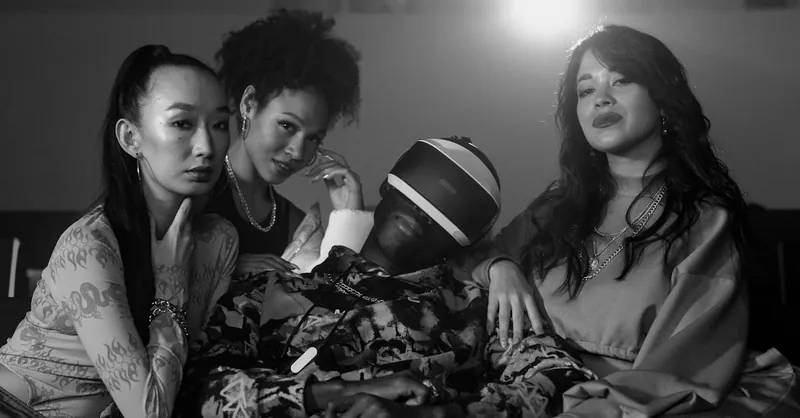
Image courtesy of cottonbro studio
How to Read Between the Lines: Tips for Developing Your Own Bold Opinions on Trailers
Becoming a savvy cinephile means going beyond surface impressions to truly decode what a movie trailer is signaling. To develop your own bold, insightful opinions on trailers, you need to learn how to read between the lines—identifying not just what’s shown, but what’s strategically omitted, emphasized, or subtly hinted at. This skill sharpens your ability to judge a film’s potential and resist marketing manipulation.
Practical Tips for Uncovering a Trailer’s True Value and Intent
-
Analyze the Editing Style: Notice whether the trailer uses rapid-fire cuts, lingering shots, or abrupt tonal shifts. Fast-paced montages may disguise thin plots, while slower pacing can indicate a focus on emotional depth or atmosphere. Pay attention to whether scenes seem out of chronological order—a hallmark of trailers crafting false narrative impressions.
-
Evaluate Dialogue and Voiceovers: Listen closely to scripted lines or narrator speech. Are they generic taglines designed to hype the film, or do they reveal genuine character motivations or themes? Overuse of vague catchphrases often signals marketing fluff rather than storytelling substance.
-
Spot What’s Missing: Sometimes the key to understanding a trailer lies in what it leaves out. Absence of clear antagonist introduction, unclear stakes, or lack of character development might hint at an underdeveloped story or misaligned marketing priorities.
-
Consider the Music and Sound Design: Soundtracks dramatically influence viewer perception. A mismatched or overly dramatic score can artificially inflate excitement but may not reflect the film’s true tone. Conversely, subtle, minimalist audio often aligns with more thoughtful storytelling.
-
Cross-Reference with Early Reviews and Insider Insights: Combine your trailer analysis with early critic impressions and industry buzz to validate or challenge first impressions. Bold movie lovers leverage multiple sources to build a nuanced perspective before investing time and money.
Developing a Confident, Unfiltered Perspective
-
Trust Your Gut, But Stay Skeptical: Your emotional reaction is valuable but balance it with critical scrutiny. Ask yourself if the trailer’s appeal is based on genuine promise or clever salesmanship.
-
Engage in Discussions and Debate: Sharing and defending your trailer opinions in forums, social media groups, or with fellow cinephiles helps refine your viewpoint and expose blind spots.
-
Keep Genre and Filmmaker Context in Mind: Understanding a director’s style or the conventions of a genre guides expectations, allowing you to spot when trailers subvert or conform to norms.
By honing this ability to read between the lines, you transform trailer-watching from passive consumption to active interpretation. This empowers you with bold, personalized opinions that cut through hype, helping you select films that truly resonate and sparing you from marketing mirages. Ultimately, this skill elevates your entire movie-going experience—beginning with the very first glimpse on the screen.

Image courtesy of Kyle Loftus
